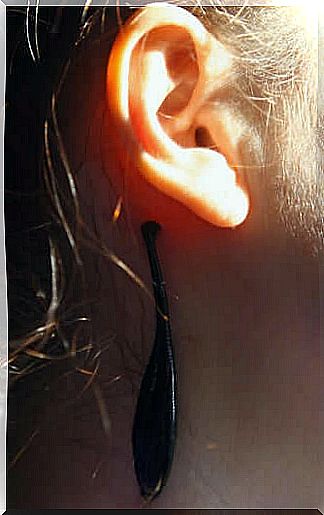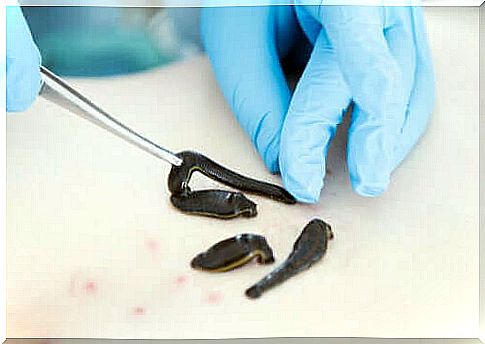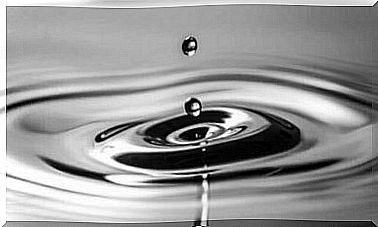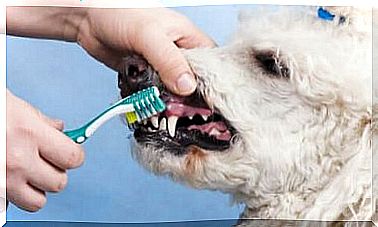Use Of Leeches In Medicine

Leeches are invertebrate hermaphrodites that belong to the annelid family. There are several species among them that have great biodiversity. Our article is about the use of leeches in medicine and we want to go into a specific way: Hirudo medicinales.
History of the use of leeches in medicine
Since their appearance in human history around 3500 before the birth of Christ, the use of leeches in medicine has been seen as essential for the treatment of certain diseases.
Evidence of their presence can be found both in the archaeological structures of the Babylonians and Egyptians, as well as in the tombs of the 18th Dynasty (1567-1308 BC) of ancient Egypt. They even appear in the Bible and the Koran.
In ancient Egypt, the use of leeches and bleeding were the most common healing methods. But other peoples also practiced this type of therapy, including the Greeks, Romans, Mayans, Aztecs and Mesopotamians.
In Greece, the use of leeches was introduced by the father of medicine, Hippocrates. The philosopher Galenus, who believed in the theory of body fluids, supported him in this.
According to this theory, a healthy body has a balance between the various humors. A sick body, on the other hand, suffers from an imbalance in the juices. To solve this, one could take blood, because this was the most important body juice.

In terms of Islamic influence, bleeding and the use of leeches were the two predominant techniques there too. You can read about it in various texts such as Fil tib Alqanoon or Altasreef liman Ajeza Anittalif .
But also in Ayurvedic medicine you can see the Indian god of Ayurveda holding a leech, a clam, an energy disk and a pot in his four hands .
treatment
Most of the applications go back to the Middle Ages. There is even an interesting anecdote told about pilgrims on the Camino de Santiago. On their journey, they stopped near ponds and bathed in the rivers.
It was thought that resting was good for the pilgrims. However, it was actually the leeches that gave them new energy. They relieved the edema that arose from the rigors of the road. In particular, they prevented thromboembolism. This was thanks to hirudin, a substance produced by the salivary glands of the leeches.
A specific type of leech called Hirudo medicinalis was used in the treatment . This species is known for its various therapeutic properties. That is why they are also called medicinal leeches.
Application of leeches: mechanism of action
The most amazing aspect of using leeches is the substances that are part of their saliva. They have a vasodilator, anti-inflammatory, anticoagulant, analgesic, germ-inhibiting and edema-inhibiting effect.
These substances have different uses:
- They eliminate microcirculation and hypoxia problems,
- reduce blood pressure,
- restore the damaged permeability of the vessels,
- improve the immune system,
- solve the origin of pain and
- promote the improvement of the bioenergetic state of our body.

Substances that should be highlighted include the following:
- Anticoagulants. Hirudin is mainly one of them. This substance inhibits thrombin and prevents blood from clotting. They have been cloned and are now used for various heart and blood diseases.
- Anti-inflammatories. Particularly noteworthy is Bdellins, a substance that inhibits the effects of trypsins, plasmin and acrosin.
- Dilation of blood vessels. These substances include histamine, acetylcholine and the inhibitors of carboxypeptidases A. They improve the blood circulation in the corresponding part of the body.
Benefits of using leeches
The use of this therapy has neither side effects nor negative consequences. There are also few contraindications. That being said, the process is painless and safe.
It must be emphasized that each copy can only be used once. Every animal could be described as a pharmaceutical-chemical machine with a powerful suction motor.
Contraindications to the use of leeches
The use of Hirudo Medicinales presents a number of risks that one must be aware of. One of the risks is in the leech’s bowels. This is the bacterium Aeromonas hydrophila. The two living beings have a symbiotic relationship with each other.
The bacterium provides the leech with enzymes that facilitate the digestion of the blood and the leech provides protection for the bacterium. In humans, however, it can cause various problems, such as orange peel, a local abscess, loss of skin, or even severe complications such as sepsis or meningitis.
The use of leeches is also not recommended for people who suffer from arterial insufficiency or problems with the immune system. Its use is also not recommended in patients who have problems with blood clotting or who suffer from local or systemic infections.
Pregnant women or people who are allergic to the active substances in the leeches should also avoid this type of therapy.
Final remark
This traditional therapy is being used again today. The effectiveness of various specific treatments could be observed. However, it should also be mentioned that there has been little change in the type of application over the years.









